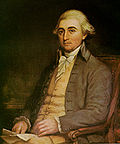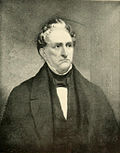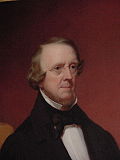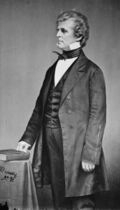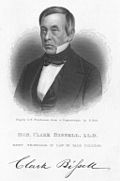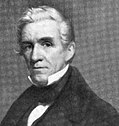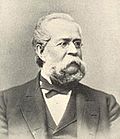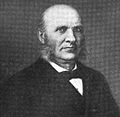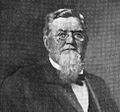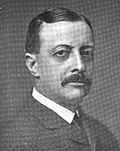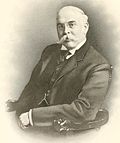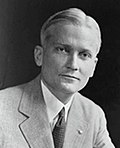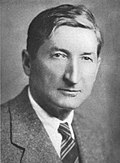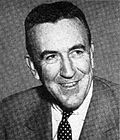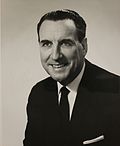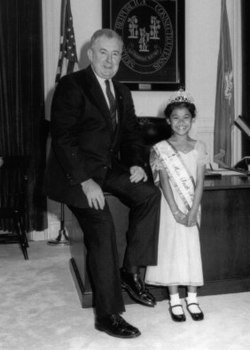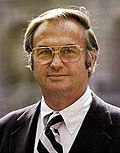Top Qs
Timeline
Chat
Perspective
List of governors of Connecticut
From Wikipedia, the free encyclopedia
Remove ads
The governor of Connecticut is the head of government of Connecticut, and the commander-in-chief of the state's military forces. The governor has a duty to enforce state laws, and the power to either approve or veto bills passed by the Connecticut General Assembly and to convene the legislature.[2] Unusual among governors, the governor of Connecticut has no power to pardon.[3] The governor of Connecticut is automatically a member of the state's Bonding Commission. He is an ex-officio member of the board of trustees of the University of Connecticut and Yale University.
There have been 69 post-Revolution governors of the state, serving 73 distinct spans in office. Four have served non-consecutive terms: Henry W. Edwards, James E. English, Marshall Jewell, and Raymond E. Baldwin. The longest terms in office were in the state's early years, when four governors were elected to nine or more one-year terms. The longest was that of the first governor, Jonathan Trumbull, who served over 14 years, but 7 of those as colonial governor; the longest-serving state governor — with no other position included in the term — was his son, Jonathan Trumbull Jr., who served over 11 years. The shortest term was that of Hiram Bingham III, who served only one day before resigning to take an elected seat in the United States Senate. Additionally, Lowell Weicker is noted for a rare third party win in American politics, having been elected to a term in 1990 representing A Connecticut Party.
The current governor is Ned Lamont, a Democrat who took office on January 9, 2019.
Remove ads
Governors
Summarize
Perspective
Connecticut was one of the original Thirteen Colonies and was admitted as a state on January 9, 1788.[4] Before it declared its independence, Connecticut was a colony of the Kingdom of Great Britain.
Connecticut did not create a state constitution for itself until several decades after it became a state; until 1818, the state operated under the provisions of its colonial charter. The charter called for the election of a governor every year, but not more than once every two years, with the term commencing on the second Thursday in May.[5]
The current Constitution of Connecticut, ratified in 1965, calls for a four-year term for the governor,[6] commencing on the Wednesday after the first Monday in the January following an election.[7] The previous constitution of 1818 originally had only a one-year term for governor; this was increased to two years in 1875,[8] and four years in 1948.[9] The 1875 amendment also set the start date of the term to its current date; before then, it was the first Wednesday in the May following an election.[10] The constitution provides for the election of a lieutenant governor for the same term as the governor. The two offices are elected on the same ticket; this provision was added in 1962.[11] In the event of a vacancy in the office of governor, the lieutenant governor becomes governor.[12] Before the adoption of the 1965 constitution, the lieutenant governor only acted as governor.[13] There is no limit of any kind on the number of terms one may serve.
Remove ads
Timeline
| Timeline of Connecticut governors |
 |
See also
Notes
- According to the Connecticut State Library, the official listing goes back to the first governor of Connecticut Colony in 1639, and did not include repeat governors serving non-consecutive terms in the colonial period; this makes Trumbull the 16th governor.[14] The official numbering since statehood includes repeat and acting governors.
- The office of Lieutenant Governor was known as Deputy-Governor under the colonial charter, but the name 'Lieutenant Governor' was predominantly used after independence.[5]
- Elections were non-partisan until the 1790s.[17]
- The Connecticut General Assembly approved the United States Declaration of Independence on October 10, 1776, and resolved that the state's government would continue as established under the charter; thus, colonial governor Jonathan Trumbull became state governor, serving roughly 14 years total.[15]
- Represented the Federalist Party
- The list of lieutenant governors supplied by the Connecticut Secretary of State marks these lieutenant governors as having no record of their party.[20]
- Represented the Democratic-Republican Party until 1817, and the Toleration Party after that.[47]
- The specific party names were the Toleration and Reform Party in 1817 and the Constitutional and Reform Party in 1818.[51]
- Tomlinson resigned, having been elected to the United States Senate.[55]
- Sobel says Tomlinson was nominated by the "Democratic-Republican and Toleration Party Nominating Caucus,"[58] but Dubin simply labels him as Democratic-Republican.[59]
- Represented the National Republican Party
- Both Dubin[68] and Kallenbach[53] describe Foot as a National Republican, but Sobel notes he was nominated by the "newly-formed Whig Party - emerging from the ruins of the National Republican Party."[69]
- Toucey lost the Democratic nomination to Thomas T. Whittlesey.[84]
- Seymour resigned, having been appointed United States Minister to Russia.[96]
- Represented the Whig Party
- Represented the Free Soil Party
- Holley's party is described as American Republican by the state;[20] Whig by the National Governor's Association, due to early membership in that party;[110] "Union Party", a coalition of Know Nothings and Republicans, by Sobel;[109] and simply Republican by Dubin.[108]
- Buckingham, a Republican, and Averill, a War Democrat, ran together on a fusion ticket in 1862 as the Union Party of Connecticut.[116]
- Averill, a War Democrat, represented the Union Party; he and Buckingham were elected on a fusion ticket.
- James English won the popular vote, but a canvassing committee found the election was fraudulent, and named Jewell governor several days into the term.[121]
- The list of lieutenant governors supplied by the Connecticut Secretary of State marks Sill as having represented the Republican Party, but contemporary news on his death reported him as having been a Democrat.[131]
- This term was only from May 1876 to January 1877, due to a constitutional amendment moving the election schedule.[8]
- First election under a constitutional amendment which lengthened terms to two years.[8]
- Morgan Bulkeley did not run for re-election in 1890, but due to a close contest and controversies, the results were not certified, and the legislature spent two years debating the issue; Bulkeley essentially served as governor by default.[151]
- Baldwin instead ran unsuccessfully for the United States Senate.[187]
- Represented the Republican Party
- Bingham resigned, having been elected to the United States Senate.[202]
- Since Trumbull took over only one day into the term, nearly all sources describe J. Edwin Brainard as lieutenant governor during this term; however, constitutionally, he would have remained president of the senate and only acted as lieutenant governor. At least one contemporary news source described him as such.[208]
- Baldwin resigned, having been elected to the United States Senate.[215]
- Represented the Democratic Party
- Robert E. Parsons is always listed as serving as lieutenant governor during this term, but constitutionally he likely would have remained president of the senate. However, questions were raised over whether or not they should fully succeed to the next office.[231]
- First term under a constitution amendment which lengthened terms to four years.[9]
- Ribicoff resigned, having been confirmed as United States Secretary of Health, Education, and Welfare.[239]
- Anthony J. Armentano is always listed as serving as lieutenant governor during this term, but constitutionally he likely would have remained president of the senate. This is the last time such a confusion would exist, as the 1965 constitution established a solid line of succession.
- Grasso resigned due to illness.[248]
- Lamont's second term began on January 4, 2023,[269] and will expire on January 6, 2027.
Remove ads
References
External links
Wikiwand - on
Seamless Wikipedia browsing. On steroids.
Remove ads







